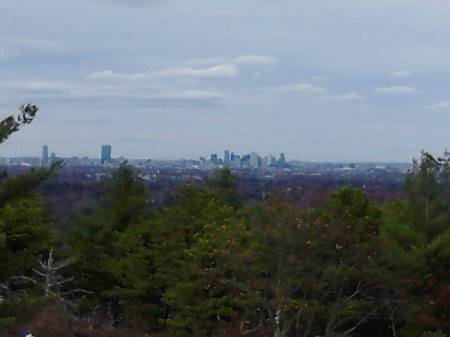This blog was started ten years ago out of exuberance and anticipation and boredom. I’d been laid off from my full time job, the kids were independent teens, and there was no reason to think this lull in life would go on forever. It was a wonderful time, at first.
I wanted to get out and enjoy my “free” time before another significant job came along to entangle me. In fact, I remember hoping that I wouldn’t find a new job right away – that I’d have the summer off, anyway, as a reward for the years of busting ass for multiple employers as well as raising a coven of young practically on my own.
Fortunately I was able to enjoy the summer of 2009 unhindered, giving my outdoors blog a good start. The first few entries were concerned with my job search, but it slowly transitioned from using outdoors activities to cope with unemployment to finding and writing about all of the trails I’d driven past in my working/soccer mom whirlwind of a life that was ending. It was like finding a secret door to another world. This blog gave me some purpose and direction, and it hasn’t lead me astray.
My enthusiasm for outdoors pursuits has not dimmed in 10 years. I just got a (‘nother) “new” (used) mountain bike, ordered my 437th pair of running shoes (but who’s counting?) and have accomplished one of several significant hikes planned for this summer.
The challenging part is doing everything I want to do on a tight budget because there are few employers clamoring for writers. While I’ve had several decent freelance jobs (lasting a year or more) in the past decade and published three books, I’ve had to significantly reduce my expectations for ever returning to a well-paying full-time job in my field. The field of journalism shrunk by something like 40 percent – shed almost half of all jobs – in the last 15 years. I feel fortunate to still scratch out a living putting words together.
What I do now resembles using stepping stones to cross a brook, planning carefully for my next step and maintaining my balance, because there are no safety nets in self-employment. One big screw-up can cost dearly, whether it’s a trip to the emergency room for getting too daring on the trails (been there, done that) or letting my ambition for travel outstrip my financial resources. My outdoors adventures help with this life planning immeasurably, whether it’s toughing my way through to a goal or turning back and regrouping when the route is impassible.
A big part of the game is budgeting, both time and money. It’s funny in hindsight that I worked at an outdoors retailer and saw firsthand the “gearache” so many adventurers wander into. I don’t bother pretending anymore: I find used bikes and discount shoes. I eke long lives out of old style frame packs rather than buying the latest and greatest stuff. When friends offer rain jackets their kids have cast off, I take them without shame. When you think about it, nobody’s reading the label on your hiking boots or knock-off jacket when you’re on a trail. If the gear fits and functions as it should, who cares if it’s Patagonia or Columbia, used or new?
Also, I’ve stopped spending money on stuff like road races even though I enjoyed them and liked testing myself. After doing the math it was undeniable that $50 or $75 entry fees were just buying me very expensive t-shirts because I wasn’t going to be on the podium.
Lots of stuff happens in 10 years of life: you might travel to countries you never imagined visiting (like Peru), you might fall in love (checked the box there), you might become a grandparent (ditto), and you might hit some rough patches. As far as the latter goes, there’s no salve like nature to soothe broken hearts, tortured psyches, and provide inspiration and direction to aimless, jobless adults. Experiencing nature re-centers a person, reducing stress and from what I’ve experienced, releases endorphins that are better
than an 8 percent ABV microbrew after a long day on a trail.
When I work at my new job, which is speaking on the topics of my published books, including Hidden Gems of New England and Hikes Through History – I am an outspoken advocate of forest bathing, that practice that puts us back in touch with the natural world, even if it’s in micro-doses of 15 minutes a day.
When we find our footing in nature we can begin to take our next steps in life.
![IMG_20190525_144947525[1] IMG_20190525_144947525[1]](https://alisonwriter.files.wordpress.com/2019/07/img_20190525_1449475251.jpg?w=153&resize=153%2C203&h=203#038;h=203)
![IMG_20190619_180006953[1] IMG_20190619_180006953[1]](https://alisonwriter.files.wordpress.com/2019/07/img_20190619_1800069531.jpg?w=133&resize=133%2C100&h=100#038;h=100)
![IMG_20190622_141949404[1] IMG_20190622_141949404[1]](https://alisonwriter.files.wordpress.com/2019/07/img_20190622_1419494041.jpg?w=133&resize=133%2C99&h=99#038;h=99)
![IMG_20190702_183025534[1] IMG_20190702_183025534[1]](https://alisonwriter.files.wordpress.com/2019/07/img_20190702_1830255341.jpg?w=152&resize=152%2C203&h=203#038;h=203)
![IMG_20180119_111823_886[1] IMG_20180119_111823_886[1]](https://alisonwriter.files.wordpress.com/2018/02/img_20180119_111823_8861.jpg?w=207&resize=207%2C156&h=156#038;h=156)














